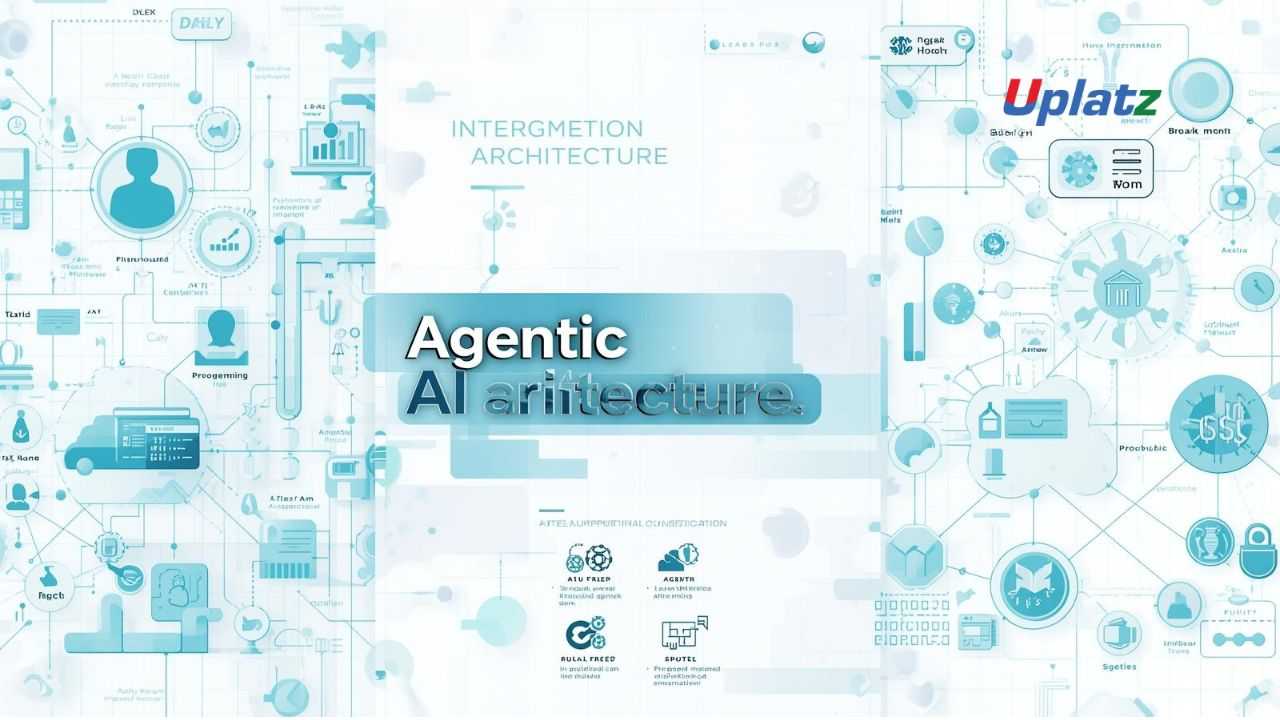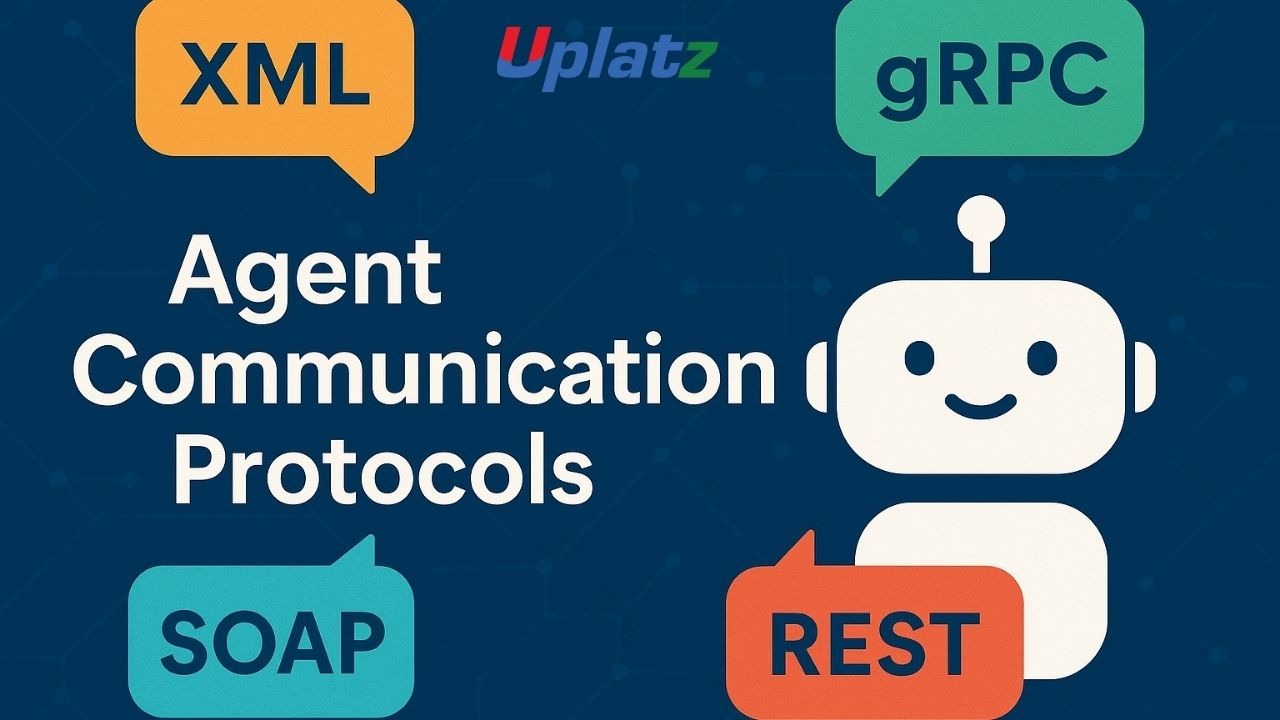Agentic AI System Architecture
Master the architecture and orchestration of agentic AI systems—learn to design, build, and deploy intelligent, autonomous agents Price Match Guarantee
Full Lifetime Access
Access on any Device
Technical Support
Secure Checkout
Course Completion Certificate
Price Match Guarantee
Full Lifetime Access
Access on any Device
Technical Support
Secure Checkout
Course Completion Certificate
 90% Started a new career
BUY THIS COURSE (
90% Started a new career
BUY THIS COURSE (GBP 12 GBP 29 )-
 81% Got a pay increase and promotion
81% Got a pay increase and promotion
Students also bought -
-

- Agentic AI for DevOps
- 10 Hours
- GBP 12
- 10 Learners
-

- Agent Communication Protocols (ACP)
- 10 Hours
- GBP 12
- 10 Learners
-

- Agentic AI for Cybersecurity
- 10 Hours
- GBP 12
- 10 Learners

Agentic AI System Architecture is an advanced, hands-on course designed to explore the next frontier of artificial intelligence—intelligent automation powered by autonomous agents. Unlike traditional AI systems that rely solely on reactive responses, agentic AI systems can perceive, reason, plan, and act independently to achieve complex goals. This course provides a complete understanding of how to conceptualize, design, and deploy such intelligent systems, making it ideal for AI developers, data scientists, and system architects seeking to master real-world implementations of agentic intelligence.
At its foundation, agentic AI signifies a paradigm shift from static AI models to dynamic, goal-driven systems. These systems exhibit the capacity for autonomous decision-making and collaboration, reflecting how intelligence in machines is evolving from narrow task execution to broader, context-aware reasoning. Through this course, learners will gain a holistic understanding of the architecture, design principles, and computational frameworks that underpin scalable, explainable, and secure agentic systems. With the increasing integration of large language models (LLMs), APIs, and orchestration frameworks, the course provides both the conceptual grounding and technical skills required to create intelligent, adaptive agents for enterprise and research applications.
Course Overview and Approach
The curriculum adopts a theory-to-practice model, ensuring learners not only understand the conceptual foundations of agentic systems but can also translate that understanding into deployable applications. The course delves into how intelligent agents are structured, how they interact with one another, and how they leverage data, reasoning, and feedback mechanisms to operate autonomously in dynamic environments.
Participants will explore the core components of agentic systems—planning, reasoning, memory, and feedback loops—and learn to integrate these into modular frameworks. The course is structured to move progressively from foundational understanding to hands-on implementation. Learners will engage with practical demonstrations, real-world projects, and system-level design exercises that emphasize the interconnection between cognition and action within AI-driven architectures.
This course is not about coding individual models; it’s about orchestrating intelligence—designing environments where multiple agents interact seamlessly, execute tasks autonomously, and adapt through continual learning and feedback.
What You Will Gain
By the end of the course, learners will have designed and deployed multiple functional agentic architectures, each representing a key application of autonomous intelligence. Examples include:
-
A Research Assistant Agent capable of autonomously locating, summarizing, and critically evaluating scientific papers across multiple domains.
-
A Customer Support Agent System featuring multiple coordinated agents that handle FAQs, manage ticket escalation, and analyse user feedback to improve service delivery.
-
A Business Automation Agent that integrates APIs, scheduling tools, and reasoning mechanisms to autonomously execute and monitor workflows.
-
A Multi-Agent Simulation Environment demonstrating the dynamics of communication, cooperation, and negotiation among independent AI agents.
Each of these projects is designed to move beyond theoretical understanding and demonstrate tangible expertise in designing, implementing, and deploying agentic systems that integrate reasoning, contextual memory, and tool utilisation. Learners will develop the technical fluency needed to navigate the complexity of building autonomous architectures that perform real-world tasks safely and efficiently.
Through this experiential process, participants will acquire the ability to:
-
Understand the complete lifecycle of agentic systems, from conceptualisation to deployment.
-
Implement cognitive components such as memory, reasoning, planning, and feedback for adaptive decision-making.
-
Integrate APIs, external databases, and computational tools to create actionable agents.
-
Design and manage multi-agent ecosystems where agents communicate, coordinate, and collaborate to achieve shared objectives.
-
Deploy and monitor agentic systems on cloud-based and containerised platforms, ensuring scalability and maintainability.
-
Evaluate and optimise performance, safety, and reliability across complex autonomous workflows.
These outcomes enable learners to bridge the gap between theory and applied intelligence, positioning them at the forefront of next-generation AI system development.
Who This Course Is For
The Agentic AI System Architecture course caters to a diverse audience of learners and professionals who share an interest in autonomous systems and AI-driven innovation. It is ideally suited for:
-
AI Developers and Engineers seeking to move beyond simple prompt engineering to develop adaptive, multi-agent frameworks.
-
Machine Learning Practitioners who wish to understand reasoning, orchestration, and planning in autonomous environments.
-
Data Scientists and Analysts aiming to automate analytical decision-making pipelines and incorporate intelligent feedback mechanisms.
-
Enterprise Architects and CTOs designing intelligent automation systems that enhance organisational efficiency.
-
Researchers and Innovators exploring emerging themes such as collective intelligence, emergent behaviour, and adaptive learning systems.
Whether learners are developing commercial applications, conducting academic research, or leading technological strategy, this course provides the architectural thinking and technical foundation necessary to succeed in the evolving AI landscape. It empowers participants to move from a conceptual understanding of autonomy to building systems that actively demonstrate it.
Why Learn Agentic AI System Architecture?
Agentic AI represents the future of intelligent computing, where machines are not limited to responding to inputs but are capable of initiating actions, learning from outcomes, and pursuing goals independently. This transformative capability is reshaping industries—from enterprise automation to robotics, education, and scientific research—where the need for autonomous, self-improving systems is rapidly increasing.
Learning Agentic AI System Architecture offers several distinct advantages:
-
Mastering Autonomous Intelligence
Learners will understand how to design AI that perceives environments, reasons through possibilities, and plans actions to achieve defined objectives without human intervention. -
Building Scalable, Integrated Systems
The course teaches how to create modular architectures that combine LLMs, APIs, external tools, and databases into unified systems capable of performing complex, multi-step operations. -
Designing Multi-Agent Ecosystems
Participants gain practical experience in building environments where agents communicate, cooperate, and negotiate to achieve shared or competing goals—key to modern AI research and applications. -
Understanding Orchestration and Evaluation Frameworks
The course explores advanced orchestration techniques for managing agent interactions, ensuring that systems remain coherent, explainable, and ethically aligned. Learners also gain insights into evaluation frameworks used to measure autonomy, accuracy, and safety. -
Gaining Future-Ready Expertise
As industries transition from task-based automation to goal-driven intelligence, the ability to design and deploy agentic systems is becoming one of the most highly valued technical competencies. By learning these principles, participants position themselves at the forefront of AI innovation in 2025 and beyond.
The rise of agentic AI parallels the broader movement towards intelligent ecosystems, where humans and machines collaborate to achieve shared objectives. As this transformation accelerates, professionals who understand agentic architectures will play a crucial role in shaping how organisations and societies leverage autonomous technologies for innovation and efficiency.
By the end of this course, you will be able to:
- Understand the layered architecture of Agentic AI systems.
- Implement memory, planning, and reasoning modules.
- Build autonomous task-oriented agents using LLMs and APIs.
- Design communication and coordination among multiple agents.
- Integrate external tools, vector databases, and APIs for enhanced capability.
- Apply safety, governance, and evaluation methods for reliable deployment.
- Deploy agentic systems using Docker, Kubernetes, or cloud services.
- Monitor, scale, and iterate agent systems for performance optimization.
Course Syllabus
Module 1: Introduction to Agentic AI
Foundations of agentic systems, definitions, and historical evolution.
Key differences between traditional AI, LLMs, and Agentic AI.
Module 2: Core Components of Agentic Architecture
Cognition, memory, planning, reasoning, and feedback loops.
Module 3: Understanding LLMs in Agentic Systems
Prompting vs. orchestration; role of transformer-based models.
Module 4: Reasoning and Decision-Making Loops
Types of reasoning (chain-of-thought, tree-of-thought, reflective reasoning).
Module 5: Agent Memory Systems
Short-term vs. long-term memory; vector databases and retrieval mechanisms.
Module 6: Tool Use and External API Integration
Designing tool interfaces; action planning through APIs.
Module 7: Multi-Agent Collaboration
Communication protocols, coordination strategies, emergent behavior.
Module 8: Environment and Context Management
Perception, context windows, and state tracking in agentic systems.
Module 9: Planning and Goal Management
Hierarchical task decomposition and planning frameworks.
Module 10: Frameworks for Agentic Systems
LangChain, CrewAI, AutoGen, Semantic Kernel, and custom pipelines.
Module 11: Designing Cognitive Architecture
Layered approach: perception → reasoning → action → evaluation.
Module 12: Simulation and Sandbox Testing
Creating safe environments for agentic experiments.
Module 13: Orchestrating Multi-Agent Workflows
Message routing, coordination layers, and control hierarchies.
Module 14: Human-in-the-Loop Systems
Combining autonomous and guided interaction strategies.
Module 15: Memory-Enhanced Retrieval Systems
Integrating RAG (Retrieval-Augmented Generation) pipelines with agents.
Module 16: Ethical, Safe, and Explainable Agentic Systems
Designing trustworthy agents with transparency and compliance.
Module 17: Evaluation and Metrics
Measuring performance, coherence, reliability, and success rates.
Module 18: Deployment and Monitoring
Using Docker, cloud services, and observability frameworks.
Module 19: Enterprise Use Cases and Patterns
Automation, business intelligence, workflow orchestration, and research.
Module 20: Capstone Project – Multi-Agent Ecosystem
Design and deploy a complex multi-agent system demonstrating reasoning, collaboration, and real-world integration.
Module 21: Agentic AI Interview Questions & Answers
Top interview Q&A covering architecture, frameworks, and design principles.
Upon completion, learners receive an industry-recognized Certificate of Mastery in Agentic AI System Architecture from Uplatz.
This certification validates your expertise in designing, orchestrating, and deploying intelligent, autonomous AI systems. It adds strong credibility for AI architect, ML engineer, and automation strategist roles.
Agentic AI is rapidly becoming the foundation of next-generation software. Expertise in this area qualifies you for high-demand roles such as:
- AI Architect
- Autonomous Systems Engineer
- Multi-Agent Systems Developer
- AI Workflow Orchestrator
- Cognitive Automation Specialist
- Research Engineer in Agentic Systems
Professionals skilled in agentic design are in demand across tech enterprises, R&D labs, startups, and automation-driven industries.
- What is an Agentic AI System and how does it differ from traditional AI?
An Agentic AI system is designed to act autonomously—reasoning, planning, and executing tasks—unlike traditional AI that responds to static inputs. - What are the key components of Agentic AI architecture?
Core components include reasoning engine, memory, planning, action, environment interface, and feedback loop. - How do agents communicate in multi-agent systems?
Through message passing, shared memory, or blackboard architectures that enable coordination and task distribution. - What is the role of LLMs in agentic systems?
LLMs act as the cognitive layer for reasoning, context understanding, and language-based interaction. - What frameworks can be used to build agentic systems?
LangChain, AutoGen, CrewAI, and Semantic Kernel are popular open-source options. - How is memory implemented in agentic architectures?
Using vector databases like FAISS, Pinecone, or Chroma for context retrieval and long-term knowledge storage. - What is tool use in agentic AI?
It refers to an agent’s ability to invoke external APIs, databases, or software tools to achieve goals. - How can safety and reliability be ensured in autonomous agents?
By applying human-in-the-loop feedback, rule-based constraints, and ethical governance protocols. - What are key evaluation metrics for agentic systems?
Task success rate, coherence, autonomy, efficiency, and interpretability. - How is a multi-agent ecosystem deployed at scale?
By using containerized orchestration (Docker/Kubernetes) with monitoring, version control, and feedback optimization loops.









